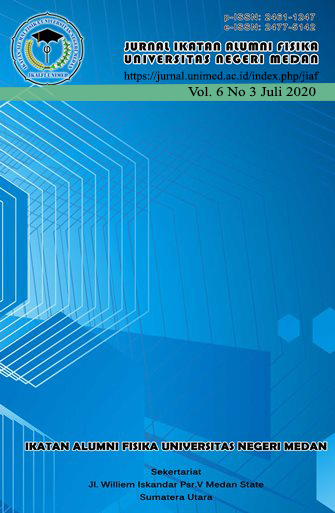PROFIL HOTS MAHASISWA DIII TEKNIK KIMIA POLITEKNIK NEGERI BANDUNG KARENA MODEL PEMBELAJARAN FISIKA DIBeK&P2D
DOI:
https://doi.org/10.24114/jiaf.v6i3.19679Keywords:
Student HOTS profiles, Learning Models, DIBeK&P2DAbstract
The research objective was to determine the profile of the increase in thinking skills to analyze, evaluate, and the sub-ability to think in it due to the implementation of the physics learning model, the results of the R&D that had been done. As research subjects, 56 students from the Bandung State Polytechnic Chemical Engineering Study Program were involved. This research used a quasi-experimental method with pre-test post-test control group design. Research shows that the increase in analyzing ability, evaluation ability, organizing sub-ability, checking sub-ability, and critiquing sub-ability through the DIBeK&P2D learning model is higher than the conventional learning method (lecture), equal to the defferentiating sub-ability, and lower for the sub-ability attributing. Significantly different improvements occurred for total thinking ability, organizing sub-ability, checking sub-ability, and critiquing sub-ability. The increase was not significantly different for the ability to analyze, the ability to evaluate, the differentiating sub-ability, and the attributing sub-ability.References
Ananda, R. & Fadhli, M. (2018). Statistik Pendidikan: Teori dan Praktik Dalam Pendidikan. Medan: Widya Puspita.
Anderson, L. W. & Krathwohl, D. R. (2001). A Taxonomy for Learning, Teaching, and Assessing:A Revision of Bloom™s Taxonomy of Educational Objectives. New York: Addison Wesley Longman Inc.
Annisa, F. A., Karim, S. & Aminudin,A. (2014). Penerapan Metode Pembelajaran Demonstrasi Interaktif Untuk Meningkatkan Hasil Belajar Fisika Siswa SMA Pada Konsep Suhu Dan Kalor. Jurnal Pengajaran MIPA. 19(1), 88-93. DOI:
Herman, J. L., Aschbacher, P. R. & Winters, L. (1992). A Practical Guide to Alternative Assessment. Alexandria, VA.: Association for Supervision and Curriculum Development.
Liliasari. (2011). Membangun Masyarakat Melek Sains Berkarakter Bangsa Melalui Pembelajaran. Makalah disajikan dalam Seminar Nasional IPA, di Universitas Negeri Semarang.
Mardiana, N. (2017). Peningkatan Physics HOTS Melalui Mobile Learning. Journal of Physics and Science Learning (PASCAL). 1(2), 1-9.
Meltzer, D. E. (2002). The Relationship between Mathematics Preparation and Conceptual Learning Gains in Physics: A Possible œHidden Variable in Diagnostic Pretest Scores. American Journal of Physics. 70 (2), 1259-1268.
Prayogi, R. D. & Estetika, R. (2019). Kecakapan Abad 21: Kompetensi Digital Pendidik Masa Depan. Jurnal Manajemen Pendidikan. 14(2), 144-151.
Purwasih, R., Ambarita, A., & Muncarno, (2017). Pengaruh Project Based Learning terhadap Hasil Belajar Tematik. Jurnal Pedagogi. 5(9), 1-11.
Rasagama, I G., Hadiningrum, K., & Ghozali, M. (2012). Perancangan Strategi Program Perkuliahan Fisika untuk Meningkatkan Kemampuan Menganalisis dan Mengevaluasi Mahasiswa Jurusan Teknik Kimia Politeknik Negeri Bandung. Prosiding Seminar Nasional Fisika Terapan III Departemen Fisika, FST, Universitas Airlangga Surabaya, 1-8.
Santoso, K. & Rahmatsyah. (2020). Pengaruh Model Problem Based Learning Terhadap Higher Order Thinking Skills (HOTS) Siswa Pada Materi Fisika. Jurnal Ikatan Alumni Fisika Universitas Negeri Medan. 6(2), 47-52.
Sungkono, Sunarno, W., & Sukarmin. (2014). Pembelajaran Fisika Dengan Pendekatan CTL Melalui Metode Proyek Dan Eksperimen Ditinjau Dari Kemampuan Menggunakan Alat Ukur Dan Sikap Ilmiah. Jurnal Inkuiri. 3(2), 1-9.
Umamah, C. & & Andi, H. J. (2019). Pengaruh Model Project Based Learning Terhadap Keterampilan Berpikir Kreatif dalam Pembelajaran Fisika Terapan. Jurnal Pendidikan Fisika dan Keilmuan (JPFK). 5(1), 7-14.
Wartika1, I K., Candiasa, I M., & Suarni, N. K. (2014). Pengaruh Penerapan Model Pembelajaran Kooperatif Tipe STAD Berbasis Asesmen Kinerja terhadap Hasil Belajar Fisika Ditinjau Dari Sikap Ilmiah. Jurnal Penelitian dan Evaluasi Pendidikan. 4(1), 1-14.
Website polban.ac.id. (2020). Capaian Lulusan DIII Teknik Kimia Politeknik Negeri Bandung. Dilihat dari https://www.polban.ac.id/teknik-kimia/diii-teknik-kimia/ pada Hari Rabu, 27 Agustus 2020.
Wenning, C. J. (2011). Levels of Inquiry Model of Science Teaching: Learning sequences to lesson plans. Journal of Physics Teacher Education Online. 6(2), 9-16.
Downloads
Published
Issue
Section
License
Copyright (c) 2020 JURNAL IKATAN ALUMNI FISIKA UNIVERSITAS NEGERI MEDAN

This work is licensed under a Creative Commons Attribution 4.0 International License.
Authors who publish with this journal agree to the following terms:- Authors retain copyright and grant the journal right of first publication with the work simultaneously licensed under a Creative Commons Attribution License that allows others to share the work with an acknowledgement of the work's authorship and initial publication in this journal.
- Authors are able to enter into separate, additional contractual arrangements for the non-exclusive distribution of the journal's published version of the work (e.g., post it to an institutional repository or publish it in a book), with an acknowledgement of its initial publication in this journal.
- Authors are permitted and encouraged to post their work online (e.g., in institutional repositories or on their website) prior to and during the submission process, as it can lead to productive exchanges, as well as earlier and greater citation of published work (See The Effect of Open Access).

